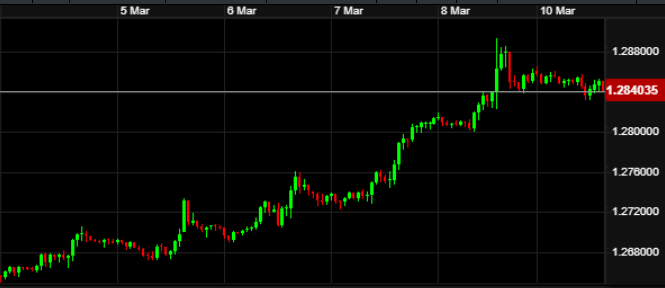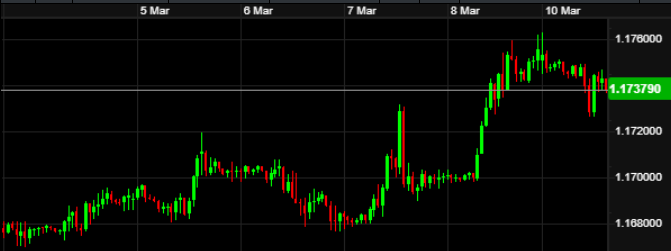ACM Update 11-03-24

With the ECB and Federal Reserve both edging closer to cutting interest rates, sterling was on the front foot last week. Combined with US Unemployment rising, this pushed Sterling-Dollar to its highest in seven months come Friday afternoon.
The focus this week will be on US inflation data, released on Wednesday lunchtime. UK Unemployment and GDP figures also arrive, demonstrating how much the UK economy is bouncing back from its 2023-ending technical recession.
Whilst sterling had a positive week across the board (hitting a seven-month high versus the Dollar), this was mainly driven by US events more than anything in Britain. According to a Bloomberg article over the weekend, the Pound is beating more than 90% of the world’s currencies so far in 2024 as the economy bounces back, plus interest rates staying higher for longer has led to a healthy GBP appetite.
UK news was very much focussed on Jeremy Hunt’s budget, where he announced £10bn worth of tax cuts. Much will come from further squeezes to public services and the changes featured a few Labour policies. The event marked the Conservative Party’s final roll of the dice before a forecast autumn election.
Data-wise, Services PMI data for February slipped a fraction to 53.8 in the UK but the reading only had a slight impact on the pound on Tuesday morning. As already mentioned, despite the lack of data, sterling enjoyed a buoyant week hitting a seven-month high against the Dollar, and just shy of its highest in 20 months against the Euro.
Jobs data and comments from Jerome Powell continued to shed light on upcoming monetary policy in the US. The Fed Governor testified to both the House and Senate respectively last week, suggesting the committee are getting very close to the confidence required to start cutting interest rates soon.
Powell’s comment of “were not far from it” regarding a point of confidence to start lowering interest rates, saw a weakening Dollar as he awaits “just a bit more evidence”. Expectations are rising for a June interest rate cut from the Federal Reserve, two meetings away.
The number of cuts meanwhile seems to be reducing, as Fed members are becoming more cautious regarding reducing rates too rapidly. Policymaker Neel Kashkari stated last week that he expects the Fed to cut interest rates “twice, or potentially just once” in 2024. This is significantly less than had been forecast a couple of months ago.
The Fed’s latest Beige Book was also released and we are now ten days from their next meeting on 20th March. This is expected to see no change in policy, however this week’s US inflation data could be a factor in that decision, should it spring a surprise.
The US jobs market remains buoyant for now despite the JOLTS jobs figure for January showing a slight dip, with the number of vacancies now at 8.86m (down from 9.03m in December). Non-Farm Payrolls added a healthy 275k jobs to the US economy (198k forecast), however the previous month was revised down hugely from 353k to 229k.
Average earnings were the main concern, only growing by 0.1% month on month. Unemployment however bounced back up in February, hitting its highest level since February 2022 in one of the first signs that the US jobs market could be suffering under the pressure of higher interest rates. This was a major factor in Friday afternoon’s Dollar weakness.
The strong trend for GBP against the Dollar over the last week can be seen in the chart below:

In the Eurozone, as widely forecast the ECB opted to hold interest rates at 4.5% for the fourth consecutive meeting. President Lagarde commented that the decision was unanimous and again stressed the downward trajectory in inflation needs to be maintained before deciding on any cuts. She continues to cite global geopolitical tensions and economic uncertainty as other factors.
The bank also decided to revise down their inflation forecasts to (on average) 2.3% in 2024 and 2% in 2025. Growth forecasts were also dropped to 0.6% for 2024 and 1.5% in 2025. Not a great outlook for the overall Eurozone, despite economies such as Spain outperforming.
Just a few hours after the announcement, ECB member for Austria, Robert Holzmann, commented in an interview that he saw it unlikely that Frankfurt would be cutting interest rates before the Federal Reserve does. He made reference to “mistakes in the past” leading to more caution. A familiar tone.
Elsewhere, Canada held interest rates at 5.00% for the fifth time in succession. The Japanese Yen rose to a one-month high following suggestions from a policymaker that interest rates will rise this month.
Overall, a good week for sterling against the Euro as seen in the chart below:

The week ahead:
Monday – MPC Mann speech (17:00 UK time)
Tuesday – UK Unemployment & Claimant Count (07:00), MPC Mann speech (11:00), US CPI exp 3.1% (12:30)
Wednesday – UK GDP exp 0.2% in January (07:00)
Thursday – US Retail Sales/PPI inflation/Unemployment Claims (12:30)
Friday – US Empire State Manufacturing Index (12:30)
Data releases are less frequent this coming week, but those coming through will be significant in the overall economic picture, especially in the UK and US. One brief point of note is that the clocks went forward in the US & Canada last weekend, meaning an odd three-week window where the time difference is one hour less than usual.
Monday provides little of note other than a 5pm speech from the Bank of England’s chief hawk, Catherine Mann. Recently she has suggested she is moving more towards voting for a pause in interest rates, indicating a change of stance potentially. Any further information on this will be eagerly awaited.
For the UK, Unemployment & Claimant Count data will be important to see how the economic recovery is faring and whether the jobs market is feeling the weight of higher interest rates. Average earnings are forecast to remain above inflation, a key sign for consumer spending power. Equally, Wednesday morning’s UK GDP figure will provide a good idea as to whether the UK economy is bouncing back from a drab end to 2023. January is expected to show a monthly growth of 0.2%.
For the US, the biggest news will once again be inflation data. The Tuesday lunchtime release is expected to show inflation sticking at 3.1%, a sign which is unlikely to prompt the Federal Reserve to look at cutting interest rates the following week.
As mentioned, sterling has found itself in somewhat of a purple patch as a direct result of US and Eurozone interest rate cut speculation. The fact of the matter is that we could quite easily see interest rates beginning to fall in each of the three major central banks in the month of June.
Buoyant UK growth data and improvements in retail sales & unemployment could see the positive trend for the pound extended, continuing to outperform peers. For those buyers of either USD or EUR, we are in an excellent position to take advantage. This can be through either spot contracts for immediate settlements, or forward contracts for those payments required in the future.
Make sure to reach out to the Aston team and we can discuss solutions for your pending payments.
Have a great week.